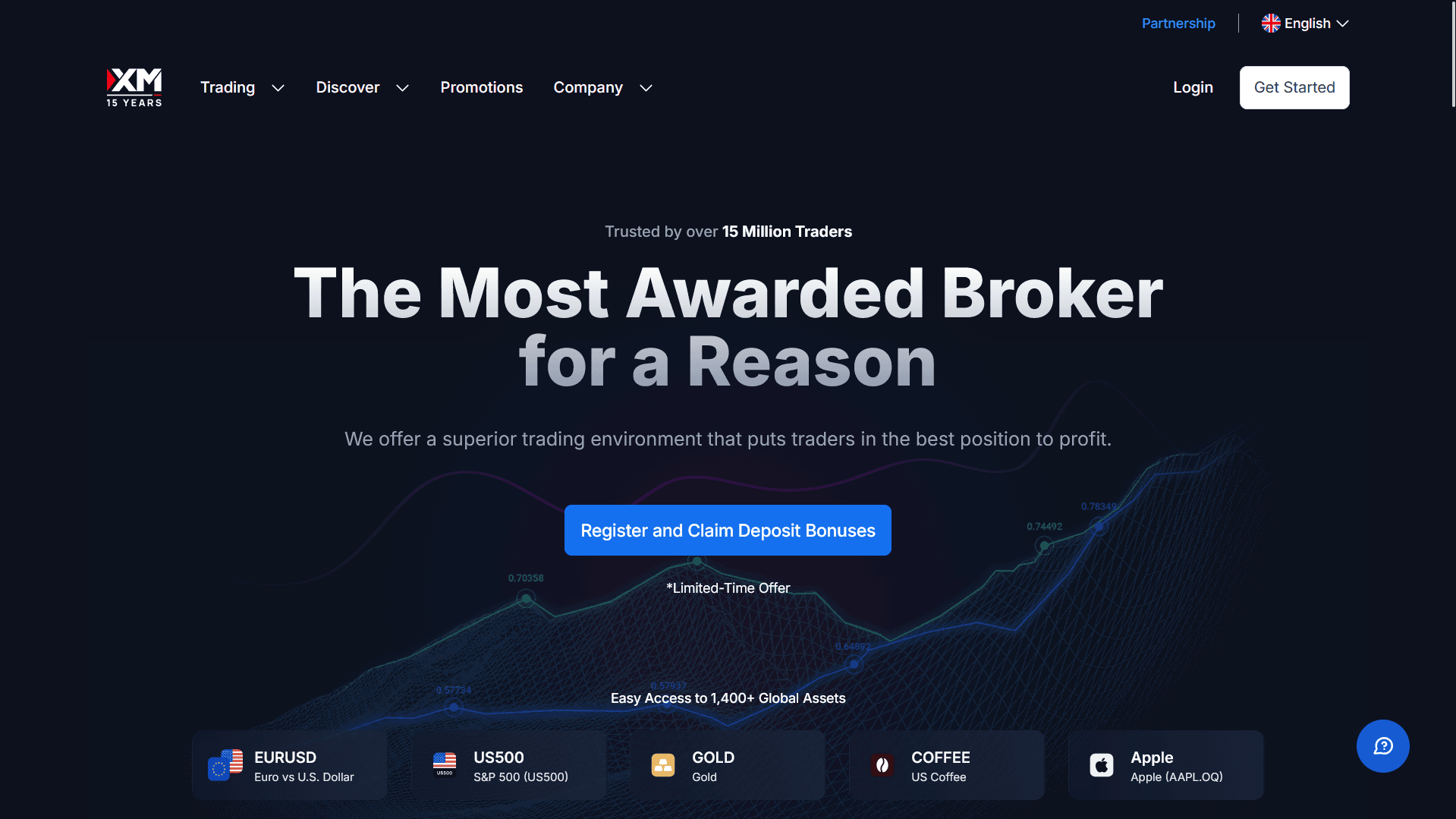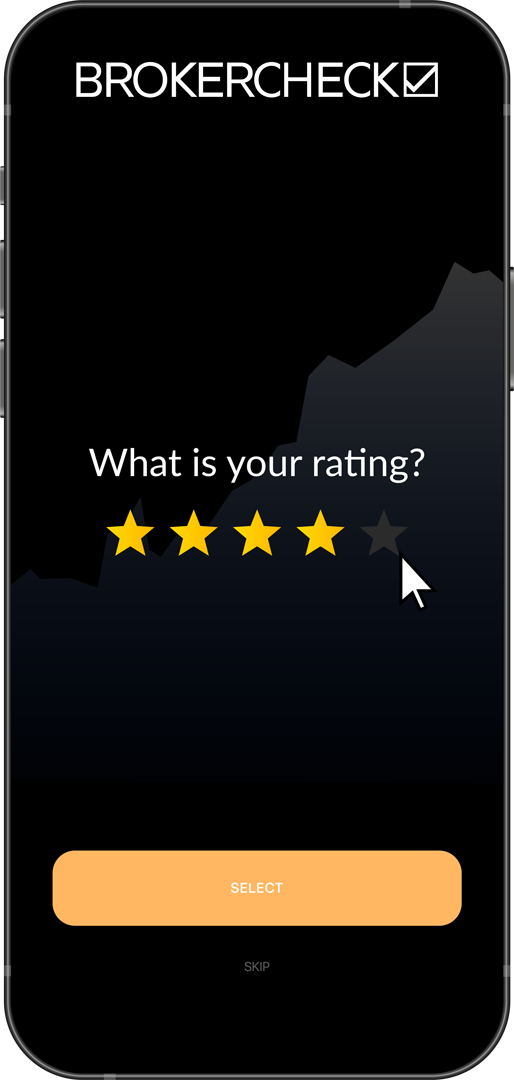1. Understanding Bollinger Bands
To unravel the complex world of trading and investing, one cannot overlook the concept of Bollinger Bands. These are crucial technical analysis tools, specifically volatility indicators, designed by John Bollinger in the 1980s to help traders understand price levels that are high or low on a relative basis.
At the simplest level, Bollinger Bands consist of a middle band (which is a Simple Moving Average), an upper band, and a lower band. The upper and lower bands are typically two standard deviations away from the middle band. This arrangement creates a dynamic envelope of sorts around the price structure on a chart, hence the name ‘Bands’. The size of the Bands can expand or contract based on market volatility. Wider Bands suggest more volatility while narrow Bands suggest less volatility.
Bollinger Bands offer a multi-faceted approach to analyzing market trends. Primarily, they help traders identify potential overbought and oversold conditions in a market. When prices continually touch the upper band, the market could be considered overbought, and when they continually touch the lower band, the market could be considered oversold. However, this alone is not a sell or buy signal. Traders often use other trading strategies or indicators in conjunction with Bollinger Bands to make informed decisions.
Secondly, Bollinger Bands also enable the identification of ‘Bollinger Bounces’ and ‘Bollinger Squeezes’. A Bollinger Bounce occurs when the price bounces off the lower band and heads towards the upper band, indicating a potential increase in price. Conversely, a Bollinger Squeeze, where the Bands come together, signifies a period of low volatility and potentially the start of a significant future price movement, but it doesn’t indicate the direction of the future price movement.
Furthermore, traders also use Bollinger Bands in combination with other technical indicators for ‘confirmation’. For example, traders might use a Moving Average Convergence Divergence (MACD) along with Bollinger Bands. If the MACD gives a buy signal and the price is at the lower Bollinger Band, the trader might consider this a good buying opportunity.
Keep in mind, like any other technical indicator, Bollinger Bands are not foolproof. They do not provide absolute buy and sell signals, but rather additional insight into market dynamics and potential opportunities. Therefore, usage of Bollinger Bands should always be accompanied by other technical analysis methods to validate and confirm signals. It’s a tool in the trader’s arsenal, to be wielded with caution, understanding, and a pinch of personal interpretation. Proper application of Bollinger Bands, coupled with sound trading strategies and risk management, can truly be helpful in making informed trading decisions.
Remember, successful trading is not just about understanding tools like Bollinger Bands, but also about consistent learning, practice, and discipline. As with any investment strategy, make sure to do thorough research and seek advice from a trusted financial advisor before making any trading decisions.
1.1. The Concept of Bollinger Bands
Developed by famous technical trader John Bollinger, Bollinger Bands are volatility bands placed above and below a moving average. Volatility is a statistical measure of the dispersion of returns for a given security or market index. Bollinger Bands consist of a middle band, which is a simple moving average, typically 20-period, and two standard deviation lines, one above and one below the moving average.
The concept of Bollinger Bands is based on market volatility. The width between the bands varies based on the volatility of the prices. During periods of significant price changes (i.e., high volatility), the bands widen to become more forgiving. During periods of stagnant pricing (i.e., low volatility), the bands contract, or narrow.
Understanding Bollinger Bands can be especially helpful for identifying ‘overbought’ or ‘oversold’ conditions. When the price of an asset moves closer to the upper band, it is often considered ‘overbought,’ and it could be a signal that a price correction may follow. On the other hand, when an asset’s price moves towards the lower band, it is often considered ‘oversold,’ and it might be a signal of an upcoming price bounce.
Bollinger Bands can also be used to identify potential price targets and forecast market volatility. For instance, when the bands come close together, constricting the moving average, it is called a squeeze. A squeeze signals a period of low volatility and is considered by traders to be a potential sign of future increased volatility and possible trading opportunities.
Furthermore, Bollinger Bands are often used in conjunction with other indicators. While the bands do take volatility into the picture, they do not account for any potential turning point in the market. To counter this, many traders use the bands with another indicator, such as the Relative Strength Index (RSI), to help them make more informed trading decisions.
Remember, like any tool, Bollinger Bands are not meant to be used as a standalone tool. They are best utilized in conjunction with other tools and indicators, providing a different dimension to your analysis. It is also essential to understand that while Bollinger Bands can help identify potential opportunities, they do not provide guarantees. As with all forms of analysis, it is always best to use Bollinger Bands as part of a trading strategy.
1.2. Components of Bollinger Bands
Understanding the components of Bollinger Bands can be a game-changer for beginner traders and investors as it can provide useful insights into potential market volatility and price levels that might not be immediately evident from other forms of analysis. The Bollinger Bands technique is a highly adaptable method that involves three major components.
The first component is the Simple Moving Average (SMA). In most cases, a 20-day SMA is used in the calculation of Bollinger Bands. This SMA serves as the middle band and forms the basis from which the upper and lower bands are calculated. It’s important to understand that the ’20-days’ does not necessarily refer to calendar days but to trading days instead, taking into account only the days when the market was open.
The second component is the Upper Bollinger Band. This is calculated by adding a certain number of standard deviations to the SMA. Typically, two standard deviations are added, but this number can be adjusted depending on the trader’s preferences and the perceived volatility of the market. The upper band represents a level of resistance, which is a price level that the asset has trouble exceeding.
The third component is the Lower Bollinger Band. This band is computed by subtracting a set number of standard deviations from the SMA. As with the upper band, the number of standard deviations used can be adjusted to suit individual trading needs. The lower band represents a level of support, which is a price level that the asset tends to rebound from.
When analyzing Bollinger Bands, it’s also important to take note of the Bandwidth, which is the distance between the upper and lower bands. A larger bandwidth indicates high volatility, while a smaller bandwidth suggests low volatility. This information can help traders make educated predictions about future price movements.
Finally, it’s worth noting the concept of Bollinger Bounces and Squeezes. A Bollinger Bounce occurs when the price bounces off the upper or lower band, indicating a possible reversal. A Bollinger Squeeze, on the other hand, happens when the bands come close together, signaling a potential breakout due to increased volatility.
These components, when interpreted correctly, can provide traders with valuable information about potential trading signals and price levels, making Bollinger Bands a vital tool in the arsenal of any serious trader or investor.
1.3. The Importance of Bollinger Bands in Trading
Developed by John Bollinger in the 1980s, Bollinger Bands are technical analysis tools which have become a fundamental aspect of many trading strategies. They serve as a measure of volatility and price levels over a specific time period, helping traders make informed investment decisions.
The Bollinger Bands consist of three lines: the middle line is a simple moving average (SMA), and the upper and lower lines are standard deviations away from the SMA. The width of the bands is directly related to the asset’s volatility – wider bands indicate higher volatility and narrower bands signify lower volatility.
Traders often use Bollinger Bands to identify potential overbought or oversold conditions. When the price of an asset approaches the upper band, it may be considered overbought, and it is potentially oversold when it nears the lower band. However, these bands should not be used as standalone indicators as the price can stay overbought or oversold for a significant amount of time.
Bollinger Bands are also useful in identifying price patterns that may not be as clear on a normal chart. These patterns include the ‘Bollinger Bounce’, which refers to the tendency of the price to return to the middle band, and the ‘Bollinger Squeeze’, which occurs when the bands tighten around the price, often indicating a period of low volatility before a significant price movement.
Another key use of Bollinger Bands is in confirming trend reversals. For example, after a sharp price drop, if the price moves up and touches the middle band, but then falls again to new lows, it’s an indication that the downtrend is still in place. Similarly, if the price rises after touching the lower band, and goes on to break above the middle band, it’s a signal that the uptrend may continue.
While Bollinger Bands provide valuable insights, traders should consider them as part of a holistic trading strategy, using them in conjunction with other technical analysis tools to confirm signals and avoid false alarms. It’s also important to remember that they don’t provide absolute buy or sell signals, but are more suited for a comparative analysis of an asset’s price over time. Their real power lies in their ability to help traders understand the levels of volatility and get a sense of what price levels are plausible in the current market environment.
It’s also crucial to understand that different settings for the Bollinger Bands can yield different results, and traders should test various settings to find the ones that work best for their trading style and the particular asset they are trading. For instance, shorter-term traders might use a 10-day period for the SMA and 1.5 standard deviations, while longer-term traders might opt for a 20-day SMA and 2 standard deviations.
Overall, Bollinger Bands are a versatile tool that can enhance a trader’s ability to analyze market conditions, identify potential trading opportunities, and manage risk. However, it is crucial to practice with them, understand their limitations, and use them responsibly to achieve the best results.
2. Using Bollinger Bands in Trading
To appreciate the utility of Bollinger Bands, it’s crucial to understand their basic composition. These bands essentially comprise three lines: the middle line, which is a simple moving average (SMA); and the upper and lower Bollinger bands, which are standard deviations from the SMA. They help traders ascertain volatility and price levels that are potentially overbought or oversold.
Identifying Overbought and Oversold Conditions
Bollinger Bands can be used to spot overbought and oversold situations. When the price of an asset is near the upper band, it is considered potentially overbought. Conversely, if it’s near the lower band, it’s potentially oversold. However, it’s essential to remember that these conditions don’t necessarily indicate an immediate price reversal. Traders commonly combine this method with other technical indicators or chart patterns to increase the probability of a successful trade.
The Squeeze and The Breakout
Another popular strategy is to use Bollinger Bands to detect period of low volatility, known as the “squeeze,” and anticipate potential price breakouts. A squeeze occurs when the bands come close together, constricting the moving average. A breakout then happens when the price moves beyond the upper or lower band, indicating a substantial move in that direction. However, to avoid false signals, it’s often advisable to use a filter, like a rise in volume or an accompanying momentum indicator.
Reversals with Bollinger Bands
Bollinger Bands also help traders spot potential price reversals. This is based on the principle that if the price moves outside of the bands, particularly after a period of low volatility, it has a high probability of reversing. This reversal could be in the form of a “bounce” off the Bollinger Band. However, as with overbought and oversold conditions, these signals should be used in conjunction with other indications of price direction.
While Bollinger Bands are a powerful tool, they’re not foolproof. Like all technical indicators, they should be used as part of a comprehensive, balanced trading strategy, incorporating risk management and an understanding of the underlying market dynamics. It’s also recommended to backtest any strategy before implementing it in your live trading. Remember, the aim is to make informed decisions, not to seek surefire bets. Trading always involves risks, but with a careful, disciplined strategy, you can manage those risks and focus on the potential rewards.
2.1. Setting Up Bollinger Bands
Bollinger Bands are a versatile tool, providing a broad perspective on market volatility and price levels. To use Bollinger Bands effectively, you need to understand how to set them up and adjust their parameters to suit your trading strategy. When you first apply Bollinger Bands to your chart, you’ll see three lines. The middle line, known as the Simple Moving Average (SMA), is the average price over a defined number of periods, commonly 20. The outer bands are standard deviations of the SMA which serve as dynamic support and resistance levels.
To start setting up Bollinger Bands on your charting platform, you typically need to select the ‘Bollinger Bands’ option from the menu. This should open a window where you can adjust the parameters. The default settings for Bollinger Bands are a 20-day SMA and two standard deviations, which create the upper and lower bands. These settings can be adjusted to fit different trading styles and time frames.
Raising the number of periods for the SMA makes the bands smoother and slower to respond to price changes, while reducing the number of periods makes the bands more responsive. If you want to catch shorter-term price movements, you might want a lower number, like 10. For long-term trends, a higher number like 50 or 100 could be more suitable.
The number of standard deviations can also be adjusted. A higher number of standard deviations will widen the bands, making them accommodate greater price volatility. A lower number will narrow the bands, making them more applicable in less volatile markets.
For those who prefer a more sensitive view of the market, consider adjusting the upper and lower bands to +/-1 standard deviation. This narrower view can provide early signals for potential breakouts or breakdowns. However, it also increases the likelihood of false signals, which is why it’s often accompanied by other indicators to confirm signals.
Regardless of the specific settings you choose, it’s important to test your Bollinger Band parameters in different market conditions and ensure they align well with your trading style. It’s also crucial to have a solid understanding of how price, volatility, and standard deviations interact within the context of Bollinger Bands in order to use this tool effectively.
Remember, Bollinger Bands are not standalone tools. They are most effective when used in combination with other technical indicators, such as Relative Strength Index, Moving Average Convergence Divergence, or volume indicators. This mix can help to confirm signals, reduce the risk of false alarms, and increase the overall reliability of your trades.
2.2. Reading Bollinger Bands
To successfully leverage Bollinger Bands in your trading strategy, it’s crucial to understand how to read these graphical representations. The Bands consist of three lines: the middle, upper, and lower lines. The middle line is a simple moving average (SMA), typically a 20-day average of closing prices. The upper line and lower line are plotted two standard deviations away from this SMA, reflecting the volatility of the price.
One of the primary concepts to grasp is that these bands expand and contract based on market volatility. When the market is volatile, the bands widen, and when it’s quiet, they narrow. This behavior is known as the Bollinger Band squeeze, a crucial signal traders look out for. A squeeze can often be a harbinger of a significant price movement.
The position of the price relative to the bands also provides valuable insights. If the price is hovering near the upper band, it may indicate that the asset is overbought, while proximity to the lower band might suggest it’s oversold.
However, it’s essential to note that Bollinger Bands alone are not definitive buy or sell signals. Instead, they should be used in conjunction with other indicators to confirm trends and potential reversals. For instance, a price moving outside the Bollinger Bands can be a sign of price exhaustion, and if combined with other indicators such as the Relative Strength Index (RSI), it could signal a potential reversal.
The concept of Bollinger Bounces and Bollinger Breakouts are other crucial strategies associated with these Bands. In a Bollinger Bounce, the price tends to bounce back from the bands’ extremes, especially during a range-bound market. On the other hand, a Bollinger Breakout refers to price breaking through the Bands’ boundaries, usually indicating the start of a new trend.
These are just some of the ways through which you can interpret Bollinger Bands. Like any other tool, expertise comes with practice and experience. So, try out these strategies on a demo account to familiarize yourself with the nuances of Bollinger Bands before applying them to your live trades.
2.3. Trading Strategies with Bollinger Bands
Bollinger Bands are a powerful tool in the toolbox of any trader, providing a multi-faceted view of market volatility, potential trade entry points, and trend reversals. The crux of trading strategies with Bollinger Bands hinges on understanding the constrictions and expansions of these bands.
When the bands contract, it’s an indication that market volatility is low. This, in trading parlance, is known as the “squeeze“. Observing this squeeze is essential as it often precedes significant price movements. Traders watch for a breakout from the squeeze, which is usually a powerful movement in the direction of the breakout.
Conversely, when the bands expand, it signifies high market volatility. Here, traders may use the “Bollinger Bounce“. This strategy operates on the principle that prices tend to bounce back to the middle of the bands. So when a price touches the lower band, it might be a good buying opportunity and touching the upper band could signal a selling opportunity.
However, be cautious while using this strategy. An expanding Bollinger Band does not always mean a reversal. It can also mean that the trend is strong. Hence, use other indicators to corroborate your observations.
There is also a trading strategy called “Bollinger Band Walk“. This is when the price walks along the upper band indicating a strong uptrend, or along the lower band indicating a strong downtrend. In such scenarios, traders avoid taking positions contrary to the ongoing trend.
A slightly more advanced strategy is the “Double Bollinger Band“. This employs two Bollinger Bands with different standard deviations (one with a standard deviation of 1 and another with 2). This helps traders to identify whether the market is in a trend or a range.
It’s essential to mention that although Bollinger Bands can be a valuable tool, they are not infallible. They should be used in conjunction with other technical analysis tools and indicators to increase the chances of success. It’s a good practice to backtest any strategy before applying it in the live market. These trading strategies, though they sound simple, require practice and a certain level of market experience. As always, risk management is a crucial part of trading. It is advisable not to risk more than a small percentage of your trading account on any single trade.
2.4. Risks and Limitations of Using Bollinger Bands
While the application of Bollinger Bands can undoubtedly provide valuable insights into market volatility and potential trading opportunities, it is equally essential to recognize its inherent risks and limitations. One of the most significant risks when utilising Bollinger Bands is the tendency to interpret a price touch or breach of the bands as a signal for buy or sell. In reality, however, merely touching or moving outside the bands does not always denote a trend reversal. Many times, prices can continue to trend in the same direction, leading to potential losses.
Another limitation lies in the default setting of the Bollinger Bands. The parameters typically set the bands at 2 standard deviations around a 20-day simple moving average. While this may work well for general market scenarios, it may not be effective in all situations. For instance, in highly volatile markets, the price may exceed the bands more frequently, leading to false signals. Similarly, in less volatile markets, the price may rarely reach the bands, thereby limiting the number of potential trade opportunities.
A further risk is the reliance on Bollinger Bands as a standalone tool. While Bollinger Bands can provide a broad picture of price volatility, they do not predict the direction of future price movements. Traders and investors should, therefore, combine Bollinger Bands with other technical analysis tools for a more balanced and informed trading decision.
Moreover, Bollinger Bands are less effective when applied to securities that lack a clear trend. In sideways or range-bound markets, prices tend to ping-pong between the upper and lower band, leading to many false signals. Thus, Bollinger Bands are most effective in trending markets, either up or down.
Lastly, it’s worth noting that setting the correct period for the band calculation is crucial. Too short a timeframe can result in a lot of noise, while too long a timeframe may not capture enough price volatility for a meaningful analysis.
Understanding these risks and limitations is a critical step in wielding the power of Bollinger Bands effectively. By combining Bollinger Bands with other technical analysis tools, setting appropriate parameters, and applying them in the right market conditions, traders and investors can mitigate these risks and maximize their trading efficacy.
3. Enhancing Trading Performance with Bollinger Bands
Understanding the concept of Bollinger Bands can significantly enhance your trading performance as they act as a reliable tool in the analysis of price patterns and trends. The Bollinger Band is a technical analysis tool created by John Bollinger in the 1980s, which encapsulates price evolution within a ‘band’ created by two standard deviations from a simple moving average (SMA).
Understanding Bollinger Bands
The Bollinger Band consists of three lines. The middle line is a simple moving average, typically set at 20 periods. The upper and lower bands are plotted two standard deviations away from the SMA. The Bands expand and contract based on the volatility of the price. When the volatility of the price increases, the bands expand and when it decreases, the bands contract.
Trading Strategies with Bollinger Bands
The most common strategy with Bollinger Bands is the identification of ‘overbought’ or ‘oversold’ conditions. When the price of an asset reaches the upper band, it is often seen as overbought, and it could be a good time to sell. Conversely, when the price reaches the lower band, the asset might be oversold and could be a good time to buy. However, it is important to note that prices can remain overbought or oversold for extended periods of time.
Another popular strategy is the Bollinger Bounce, which is based on the idea that price tends to return to the middle of the Bands. Traders can look for buy opportunities when the price bounces off the lower band and sell opportunities when the price bounces off the upper band.
Bollinger Bands and Market Conditions
Bollinger Bands can also be used to identify market conditions. During trending markets, price can ride the Bands, consistently touching the upper band in an uptrend and the lower band in a downtrend. During range-bound markets, price will bounce between the upper and lower bands, providing potential buy and sell opportunities.
Risks and Limitations
Like any trading tool, Bollinger Bands are not infallible and should be used in conjunction with other technical analysis tools. For instance, using volume indicators can confirm the strength of a Bollinger Band signal. Moreover, Bollinger Bands do not provide any hint about future direction but merely define price levels of relative high and low.
Conclusion
In the realm of trading, knowledge is power, and understanding how to effectively use Bollinger Bands can significantly enhance your trading performance. While they provide valuable insights into market conditions and potential trade points, they should be used in conjunction with other tools and strategies to maximize trading performance. Always remember to consider the risks and limitations before making trading decisions.
3.1. Combining Bollinger Bands with Other Indicators
When exploring the volatility of financial markets, Bollinger Bands are one tool that many traders utilize. Yet, it’s important to note that they often provide more value when used in conjunction with other indicators. One such companion for Bollinger Bands is the Relative Strength Index (RSI). The RSI is a momentum oscillator that measures the speed and change of price movements. When these two are used together, traders can get both a detailed view of market volatility and a sense of the market’s momentum.
For instance, if a stock’s price touches the upper Bollinger Band and the RSI indicates the stock is overbought, there is a high probability of a price decrease soon. Similarly, if the price touches the lower Bollinger Band and the RSI indicates the stock is oversold, a price increase might be on the cards.
Moving Average Convergence Divergence (MACD) is another valuable tool to use alongside Bollinger Bands. MACD is a trend-following momentum indicator, which reveals the connection between two moving averages of a security’s price. When the MACD crosses above its signal line, it’s a bullish signal, suggesting that it may be a good time to buy. Conversely, when the MACD crosses below the signal line, it’s a bearish signal, suggesting it might be a good time to sell. By combining this information with Bollinger Bands, traders can get a more comprehensive understanding of market trends and volatility.
Stochastic Oscillator, which follows the speed or the momentum of the price, can also be paired with Bollinger Bands. As a rule, the momentum changes direction before price. Hence, the combination of these tools can provide valuable early signals for possible trend reversals.
Finally, Volume Oscillator, which is a volume-based technical analysis indicator that reflects the volume flow of a security with respect to time, can also be a good partner for Bollinger Bands. High volumes often occur at market tops and bottoms, thus confirming the signals given by Bollinger Bands.
In essence, while Bollinger Bands are powerful, they can be even more so when used in tandem with other indicators. By doing so, traders can gain more granular insights and make more informed trading decisions.
3.2. Adapting Bollinger Bands to Different Market Conditions
Understanding the Bollinger Bands indicator is crucial for traders and investors looking to comprehend and exploit market conditions effectively. Notably, this tool is particularly helpful due to its ability to adjust to different market conditions, providing dynamic insights into price movement and volatility.
To start with, let’s look at how Bollinger Bands work in a trending market. Essentially, during a strong uptrend, prices tend to hug the upper band. This can serve as an indicator that the asset is overbought, but be cautious – the price may stay in an overbought condition for a long time in a strong uptrend. On the flip side, in a downtrend, prices often touch the lower band, indicating that the asset might be oversold. However, similar to the uptrend situation, prices can remain in an oversold condition for extended periods during a pronounced downtrend.
Adapting Bollinger Bands for a range-bound market is quite different. In such conditions, the price tends to oscillate between the upper and lower bands. Traders might use the Bollinger Bands bounce, where the price bounces off the upper and lower bands, as a potential signal for entry and exit points. The asset might be considered overbought when the price touches the upper band and oversold when it hits the lower band.
Another essential aspect to note is the band squeeze, which occurs when the distance between the upper and lower bands narrows significantly, indicating low volatility. This condition often precedes significant price movements, which could be a valuable signal for traders.
Moreover, the band expansion represents high volatility and a potential ending or slowing of the current trend. This expansion can be a vital sign for traders to be prepared for potential trend reversals or slowdowns.
Lastly, Bollinger Bands can be combined with other technical indicators for more robust trading signals. For instance, using them with relative strength index (RSI) can enhance their accuracy by confirming overbought and oversold conditions.
It’s crucial to remember that while Bollinger Bands can be an incredibly valuable tool in your trading toolkit, they are not infallible. Like any other technical indicator, they should be used in conjunction with other forms of analysis and market context. Always use appropriate risk management measures to protect your capital.
3.3. Tips and Tricks for Mastering Bollinger Bands
Understanding and effectively leveraging Bollinger Bands can greatly enhance your trading strategies. The first tip is to understand what Bollinger Bands are fundamentally. They are volatility bands placed above and below a simple moving average. The distance between the bands is based on standard deviation, which changes as volatility increases or decreases. The bands expand during periods of high volatility and contract during periods of low volatility.
Secondly, never use Bollinger Bands in isolation. While they provide valuable insights about volatility and potential overbought or oversold conditions, Bollinger Bands should be used in conjunction with other technical analysis tools to confirm or refute potential trade signals. For example, Relative Strength Index (RSI) or Moving Average Convergence Divergence (MACD) can provide confirmation of a potential buy or sell signal.
Next, it’s important to understand the Bollinger Bounce. This refers to the tendency of prices to rebound from the edges of the band. However, traders must be careful not to assume the price will reverse after hitting an upper or lower band; this strategy is best used in a ranging market.
Another crucial tip is to look out for Bollinger Band squeezes. A squeeze occurs when the bands come together, indicating lowered volatility. A squeeze can often be a precursor to a significant price breakout. Traders can benefit from these breakouts by entering a trade early on the breakout.
Understanding Bollinger Bandwidth is another valuable tip. Bandwidth quantifies the volatility in the market and is the width of the bands divided by the middle band. Keeping an eye on bandwidth can help traders identify periods of high volatility to potentially capitalize on.
Lastly, practicing sound risk management is crucial while using Bollinger Bands. All trading strategies, including those using Bollinger Bands, can lead to losses. Therefore, always use stop-loss orders and only risk a small percentage of your trading capital on any single trade.
These tips and tricks can help you master Bollinger Bands and incorporate them into your trading strategy. However, like all trading tools, they are not perfect and require a good understanding and practice to use effectively.












